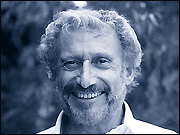Advertisement - Click to support our sponsors.


![]()
Other Views
IN his Sept. 15 View Point column, "Dolphins head to new prison camp," Ken LeVasseur offers "facts" about dolphins in captivity, the Kewalo Basin Marine Mammal Laboratory (KBMML) and its associated nonprofit organization, the Dolphin Institute. In reality, what LeVasseur presents are distortions of fact and statements with no factual foundation. Maui will be home to
safe dolphin habitatActions of irresponsible workers
led to deaths of two dolphinsFor example, contrary to LeVasseur's "facts," published scientific studies show no significant difference in survivability of bottlenosed dolphins in captivity or in the wild, KBMML never lost its funding, and no U.S. facility housing dolphins would ever starve them.
To understand why LeVasseur might be so misleading, it is necessary to recall a tragic incident that took place in 1977. At that time, LeVasseur was one of two individuals receiving a room at KBMML in exchange for cleaning the dolphin tanks weekly.
On May 27, 1977, LeVasseur and the second individual, Steve Sipman, were dismissed from their jobs after several KBMML staffers complained about their frequent disruptive behavior.
About 36 hours later --- in the darkness of night -- LeVasseur and Sipman took KBMML's two dolphins, Kea and Puka, from their tanks, and put them in the back of a small van. The two men then drove it some 50 miles to the Waianae coast past Makaha, where they threw Kea and Puka into the ocean.
Late the next afternoon, I found Kea in the water close to Makua. I heard her frightened, continuous whistling. There were deep gashes on her body, and one of her eyes was closed. She had washed up on the rocks and struggled to get off.
The next day our efforts to rescue her failed. Kea and Puka were both lost, never to be seen again despite extensive boat and aircraft searches.
LeVasseur and Sipman were later arrested and convicted of first-degree theft.
Kea and Puka had no chance of survival after being suddenly taken from long-term human care and cast into the ocean. Even in the best of circumstances, returning to the wild dolphins that have been long cared for by humans is unlikely to succeed.
Consider, for example, Buck and Luther, two bottlenosed dolphins released in Florida after months of preparation. The pair had to be rescued two weeks later, lacerated and emaciated.
Or consider the nine dolphins released from Atlantis Marine Park in Perth, Australia, after a year-long program for reintroduction. The only calf died. Three others had to be rescued, having lost 8-15 percent of their body weight. Only one of the remaining five was ever seen again.
LeVasseur is not a marine mammal scientist, and has no scientific basis for his claims about captivity and release in his opinion piece. He has no graduate degree, has never been a part of the marine mammal research community, and has no record of publications in scientific peer-reviewed journals.
His opposition to our plan for moving our current dolphins and education and research programs to the Weinberg Foundation's Maui Nui Park can only be based on misguided emotion or an attitude of "getting back" at KBMML. Neither of these reasons have the best interests of the dolphins at heart.
All of us at KBMML, who each day work with and care for the dolphins, greatly appreciate editorials in the Star-Bulletin (Sept. 13) and the Maui News supporting our move to the Weinberg Foundation's proposed Maui Nui Park in Kihei. The Maui Planning Commission voted unanimously in support of Maui Nui Park and KBMML's new home there, to be called the Dolphin Institute.
The commission approved the new Weinberg facility after 55 people testified -- 31 in support, 13 opposed and 11 with some concerns. The commission also received more than 130 letters of support for our new Maui home.
The Dolphin Institute will focus on marine mammal science, bringing to the public new and stimulating educational opportunities. We will share our knowledge gained through 30 years of scientific studies of dolphins and of Hawaii's humpback whales. And we will provide education and outreach programs, extending from pre-schoolers to graduate students working toward advanced degrees.
OUR new home will include a dolphin lagoon stretching for at least an acre, a 10-fold increase in the size of the dolphins' current habitat. There will also be a learning center, where visitors will experience dolphins and whales through interactive displays, virtual reality opportunities, and films and lectures.
Most importantly, the Dolphin Institute's new home at the Weinberg Foundation's Maui Nui Park will truly set the standard for creating a dolphin habitat that is secure, comfortable, natural and educationally enriching for both dolphin and human participants.
Lou Herman is co-founder and head of the Dolphin Institute.